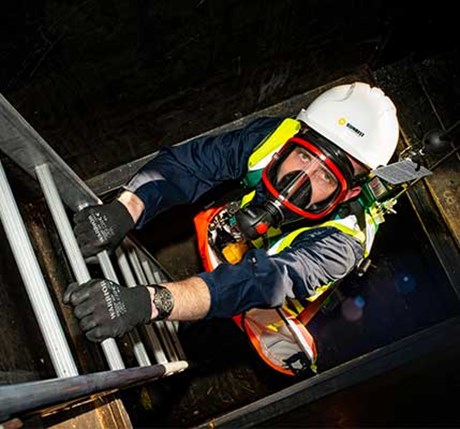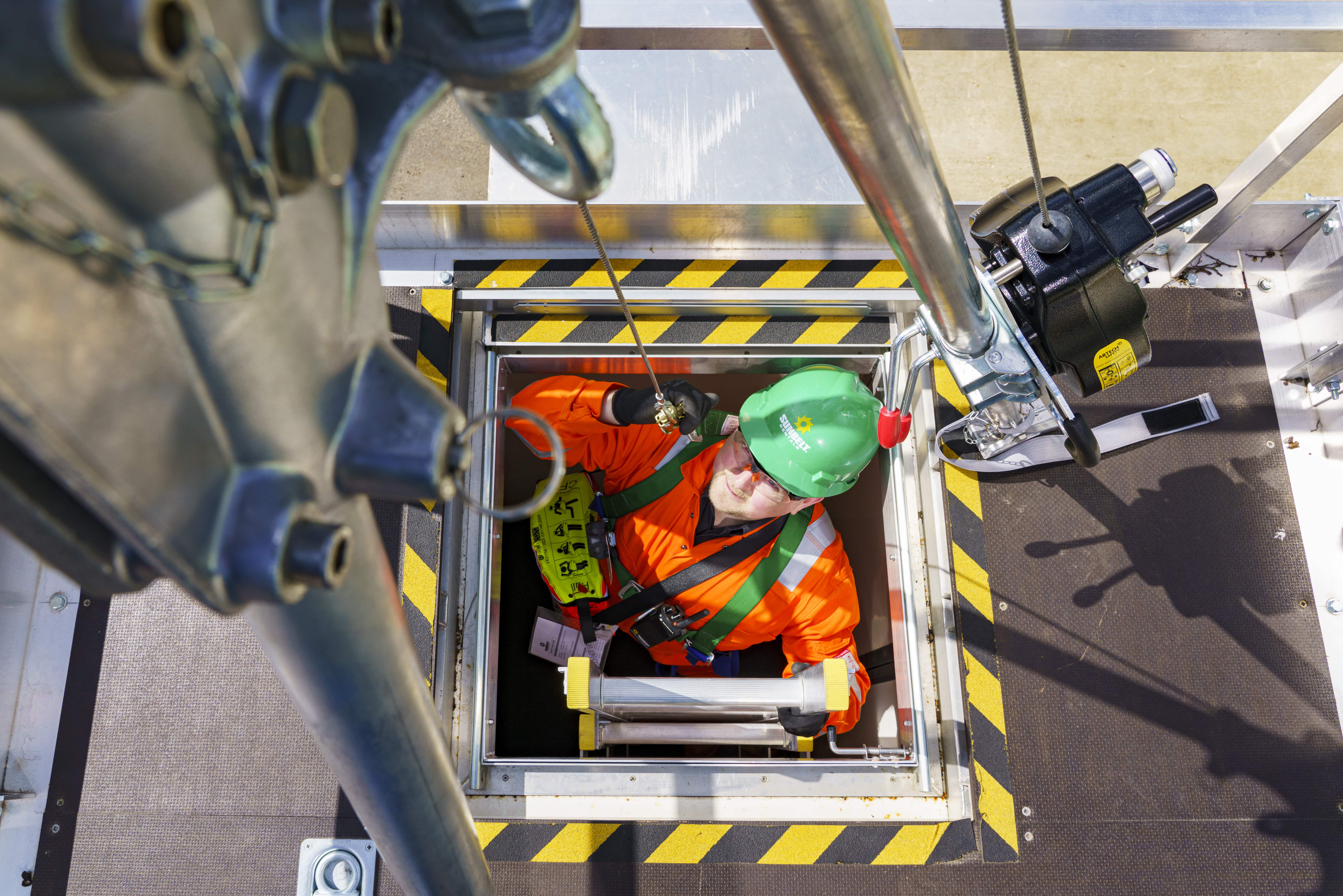Five Steps for Safely Entering and Exiting Confined Spaces
blog 25 May 2022
Every year there are hundreds of accidents in the UK involving confined spaces. A number of people are killed or seriously injured in confined spaces and over half of confined space deaths involve people trying to rescue those who are already trapped or injured.
So how can you enter and exit confined spaces safely? Find out below in our latest blog...
What is a Confined Space?
So, what exactly is a confined space? According to the Health & Safety Executive (HSE), a confined space ‘can be any space of an enclosed nature where there is a risk of death or serious injury from hazardous substances or dangerous conditions (e.g. lack of oxygen).’
Confined spaces include any chamber, tank, vat, pit, trench, pipe, sewer, flue, well or similar space and due to its enclosed nature, there arises a reasonably foreseeable specified risk.
Major risks can arise in confined spaces due to fires or explosions, drowning, loss of consciousness or asphyxiation arising from poisonous gas, fume, vapour or lack of oxygen, hot conditions leading to a dangerous increase in body temperature, and entrapment within a free flowing solid.
Confined Space Regulations
The law says that you must carry out a risk assessment for all confined space work activities to decide what safety measures are needed. The assessment should consider the task, working environment, materials and tools, the suitability of those carrying out the task and arrangements for emergency rescue. If your assessment identifies one or more specified risks within, or from work carried out within an enclosed area, the Confined Spaces Regulations 1997 apply.
Before we consider five steps for entering and exiting confined spaces safely, you should check if the work can be done another way to avoid entry or work in confined spaces. An alternative approach can sometimes reduce the need for confined space working.
How To Safely Enter and Exit Confined Spaces
- Safe Systems of Work
If you can’t avoid entry into a confined space, always have a safe system for working inside the space. Use the results of your risk assessment to help identify the precautions you need to take to reduce the risk of injury. Everyone involved will need to be trained and competent to make sure they know what to do and how to do it safely.
- Entry and Exit Plan
Consider whether the entrance is big enough to allow workers wearing all the necessary equipment to climb in and out easily and provide ready access and exit in an emergency. It can be difficult to manoeuvre in confined spaces and even just fitting into the space can be a challenge in itself. Workers need to have a clear understanding of how they will get in safely and get out once the work is complete.
- Ventilation and Testing the Air
You may be able to increase the number of openings to improve natural ventilation, and mechanical ventilation may be needed to ensure there is an adequate supply of fresh air. Testing the air may be necessary to check that it is free from toxic and flammable vapours and that it is fit to breathe. Testing should be carried out by a competent person using a suitable gas detector. At Sunbelt Rentals, we offer a wide range of gas detection equipment.
- Specialist Equipment
Where flammable or potentially explosive atmospheres are likely, specialist equipment will be needed. We offer explosion proof lighting, otherwise known as ATEX lighting. Breathing apparatus is also essential if the air inside the space cannot be made fit to breathe because of gas, fume or vapour present, or lack of oxygen.
Our experts can advise on the range of confined space equipment available such as breathing apparatus, safety harnesses, lanyards, fall arrest blocks, safety lines, tripods and davit arm systems. We also offer communications equipment to enable communication between people inside and outside the confined space and to summon help if needed in an emergency.
- Rescue Plan
It’s always essential to have suitable and sufficient emergency procedures and a rescue plan in place. You must consider how to raise an alarm and carry out rescue operations, as when things go wrong, people may be exposed to serious and immediate danger. It’s crucial that rescuers are properly trained and competent with access to the right equipment.
It’s important that we all realise the many risks associated with working in confined spaces. The HSE’s risk management website at www.hse.gov.uk/risk can help you identify the risks. You can also contact our experts for further advice.

 Open your account online within 24 hours
Open your account online within 24 hours  Nationwide, next day delivery available
Nationwide, next day delivery available  Over 200 locations near you
Over 200 locations near you 
